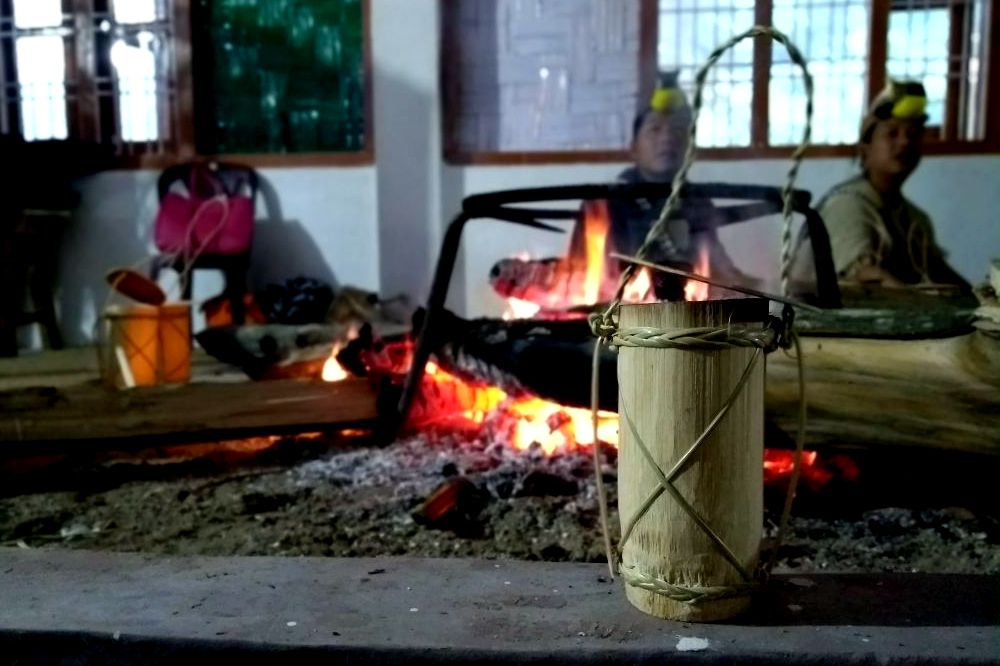This article is originally written for La Vida Travel Magazine.
Wine and religion have a harmonious and intimate association since time immemorial. Greeks, Romans, Egyptians and even the Asians associate wine with spirituality and mysticism. Nearly all religious celebrations around the world coincide with the annual harvest cycle of wine producing crops. So, it is fitting to say that wine binds the masses 😉
I was fortunate to be invited to the Yazali Nyokum Yullo Festival for its 50th Golden Jubilee Celebrations. I spend 6 days learning about the Nyishi tribe and its tribal cultural practices. The Nyishis are the largest tribal community in Arunachal Pradesh along with Apatanis, Monpas, Adis, and Galos. During my stay in Yazali, I got completely hooked to pineapples and Apong.
To know more about Nyokum Yullo Festival, read:
What is Apong?
Apong is a dark red colored organic wine made up of Temm [Millet] among the tribes in Arunachal Pradesh. It plays a key role in the traditional Nyishi tribal community as it is related to shamanic observance, ritualistic values, and folk tales. The Nyishi tribe celebrates Nyokum Yullo Festival annually in the month of February and during the Festival, Apong is served as a staple, given to everyone yet it is not a social drinking session it is a holy event to invoke the blessing of Nyokum goddess.
How is Apong made?
After harvesting of millet from the fields, it is sun-dried or in some cases above the traditional fireplace inside the kitchen. Husk and other unwanted weeds are isolated from the millet. It is then dry roasted till it gets a blackish color in a large wok stirring continuously to avoid burning. If you over roast or burn the millet, then Apong will taste bitter. Spread the roasted millet on the ground on a bamboo mat to cool down.
Another way of finding whether the Apong will be of good quality or not is to see that the millet is not lumpy. After the millets have cooled down it is mixed with crumbled cakes of Ipoh [local yeast made by grinding rice] and its transferred to an airtight container for the fermentation process to begin. It takes a month or so for the fermented stock to start emitting a strong smell to show it is ready. During this time, the container is stored in a cool dry place.
Nyishis avoid storing the container along with bamboo shoots or any sour items as it may affect the quality of Apong. A good quality Apong, may take over 6 months to ferment. The more you ferment, better the quality.
How is distillation process done?
For the distillation process, fermented millet mixture is put into a funnel-shaped bamboo container called Pottu which has a small opening at one end. Warm water is poured slowly and immutably with dried bottle gourd tool over the fermented stock to dilute it. It takes about 10 minutes for the first drops to reach into the container that is kept underneath the funnel. The container is covered with Koham leaves so that Apong `s gas doesn’t come out and a good quality Apong is made.
The first brew called Pottu is the strongest and Pohaa is the lowest quality brew. The womenfolk who makes Apong stops the distillation process when only water taste is left. Reared pigs consume the leftover.
Apong is more than a brewed wine for Nyishi tribe, for them, it is a part of their identity and religion.
You might also want to read:
- Top 8 places to visit in Arunachal Pradesh
- Inner Line Permit for North East India
- Ten things to pack for North East India trip

